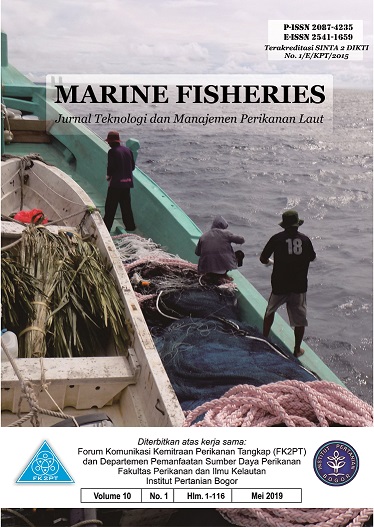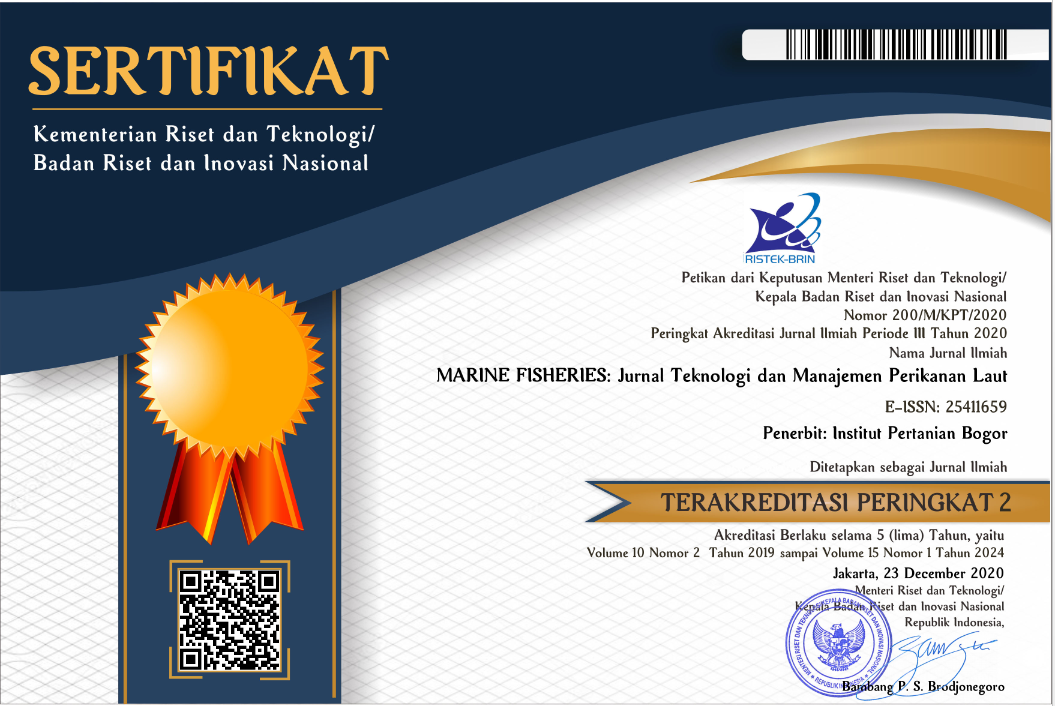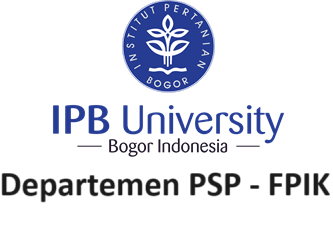DAMPAK SOSIOEKONOMI MORATORIUM IZIN PENANGKAPAN IKAN DAN LARANGAN TRANSSHIPMENT DI KOTA BITUNG
Abstract
ABSTRACT
The implementation of moratorium on fishing permits and transshipment prohibition caused the cessation of large-scale fishing vessels operation in Bitung City. This condition has an impact on the decline in production of the fishing sector, which was affecting the supply of raw materials for the processing industry. This negative trend indicates a trade off in fisheries management, especially in socioeconomic dimensions. This research aims to analyze the impact of that policies on the socioeconomic dimensions of the fishing industry. This research was conducted in Bitung City from October to December 2017. Descriptive-explanatory case study approach was used in this study. Data was collected through document studies, FGDs, interviews and observations. Informant was selected by purposive sampling technique. The indicators refers to the Sustainable Fisheries Development Indicator System (Liu et al. 2011), and the compilation of fisheries industry cluster sustainability indicator (Purwaningsih and Santosa, 2015). Furthermore, to describe the relationship between policy’s program operations and impacts, a policy monitoring analysis is used. The results showed that the socioeconomic dimensions of fishing industry in Bitung City from 2015 to 2017 had experienced negative growth. Economically, it is indicated by a decrease in total catch production, production per fisherman, export volume, and fisheries contribution to Gross Regional Domestic Product (GDRP). On the social dimension, there was a decrease of number of workers, both fishing and processing sector. However, there are two indicators that have increased, namely the average of fishermen exchange rate and the ratio of local fishermen/crew to foreign crew members.
Keywords: fisheries management, policy monitoring, socioeconomic dimensions
ABSTRAK
Penerapan moratorium izin penangkapan dan larangan transshipment menyebabkan terhentinya operasional kapal-kapal ikan skala besar di Kota Bitung. Kondisi ini berdampak pada penurunan produksi sektor penangkapan, yang memengaruhi pasokan bahan baku industri pengolahan. Tren negatif tersebut menandakan trade off dalam pengelolaan perikanan, khususnya pada dimensi sosioekonomi. Penelitian ini bertujuan untuk menganalisis dampak kebijakan terhadap dimensi sosioekonomi industri perikanan. Penelitian ini dilaksanakan pada bulan Oktober–Desember 2017 berlokasi di Kota Bitung. Pendekatan studi kasus deskriptif-eksplanatoris digunakan dalam penelitian ini. Data dikumpulkan melalui studi dokumen, FGD, wawancara serta observasi. Penentuan informan dilakukan dengan teknik purposive sampling. Indikator yang digunakan mengacu pada Sustainable Fisheries Development Indicator System (Liu et al. 2011), dan kompilasi indikator keberlanjutan klaster industri perikanan (Purwaningsih dan Santosa, 2015). Selanjutnya, untuk mendeskripsikan hubungan antara operasi program kebijakan dan hasilnya (dampak), digunakan analisis monitoring kebijakan. Hasil penelitian menunjukkan bahwa dimensi sosial ekonomi industri perikanan di Kota Bitung dari 2015 hingga 2017 telah mengalami pertumbuhan negatif. Secara ekonomi ditunjukkan dengan penurunan total produksi tangkapan, produksi per nelayan, volume ekspor, dan kontribusi perikanan terhadap PDRB. Pada dimensi sosial, terjadi penurunan jumlah pekerja, baik di sektor penangkapan maupun sektor pengolahan. Namun, ada dua indikator yang mengalami peningkatan, yaitu, rata-rata nilai tukar nelayan dan rasio nelayan/kru lokal terhadap ABK/kru asing.
Kata kunci: pengelolaan perikanan, monitoring kebijakan, dimensi sosioekonomiDownloads
Author(s) who published in this journal agree to following terms:
- Author(s) must understand and agree that the copyright script in published owned by the Marine Fisheries Journal. The copyright includes reproducing and selling the manuscript to all parties.
- Everyone can cite every manuscript published in Marine Fisheries for educational purposes, with the author's name and the Marine Fisheries Journal on reference.









